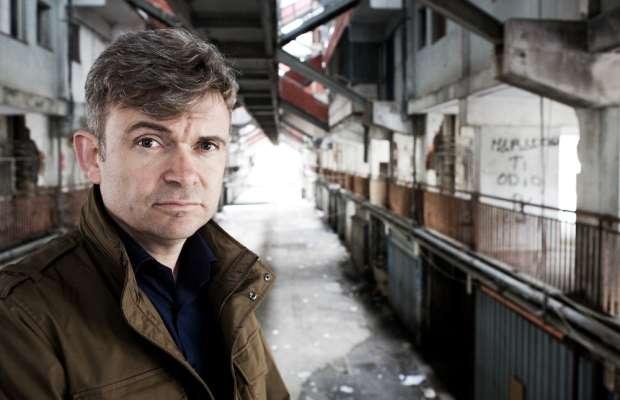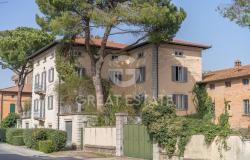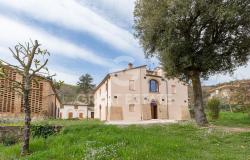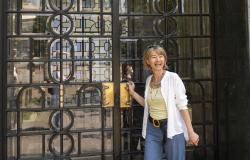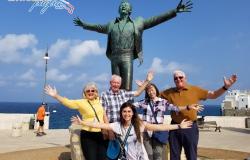Carol King interviews the presenter of ‘The Mafia’s Secret Bunkers’: internationally recognised expert on the history of Italian organised crime, John Dickie. TV documentary ‘The Mafia’s Secret Bunkers’ looks set to explode various glamorised myths about the Italian mafias. Its makers follow the efforts of Italy’s police in hunting down mafia bosses in their last places of refuge: various so-called “bunkers” in parts of the southern part of Italy. The show reveals the peculiar lives gangsters lead, constructing boltholes to live in as they attempt to escape justice. It also highlights the impressive efforts of the state’s anti-mafia magistrates, Polizia di Stato (State Police), Arma dei Carabinieri (military police) and Guardia di Finanza (Finance Guard) in tracking them down.

‘The Mafia’s Secret Bunkers’ will screen on BBC on 1 May at 9pm. The documentary has been broadcast in Italy on the History Channel as ‘Mafia Bunker’. In Italy, the show won praise for its gritty portrayal of the efforts to stamp out organised crime and unprecedented access in exposing how mafia bosses live. The subterranean fortresses, hidden tunnels and secret passageways constructed in urban and rural areas have become part of the bosses’ evasive lifestyle, which they have adopted to try evade capture yet hold on to their criminal domains. Who had the idea to make a TV documentary? An Italian production company called Stand By Me. They already had a good relationship with the police and the carabinieri and you need to have that kind of access. How did you get involved? I had already had some contact with the TV production company and it seems they had me in mind from the beginning as the presenter as my research is about the mafias. Having an English presenter helps create interest for Italians and opened doors to a co-production with the UK. What is the documentary about? ‘The Mafia’s Secret Bunkers’ tells a very interesting story about the current fight against the mafia. It’s about the hunt for latitanti, who are fugitives from justice but they stay on their own territory. It’s the success story of hunting them down – and one that has been especially successful the past five or six years. In the early 1990s, the threat of prison was meaningless. Now, the state has upped its game and it is clear that a prison sentence means spending time in prison, leading to an epidemic of bunkers.

How long did it take to make the documentary?
From the original idea to screening, it took three years. I only became involved late in the procedure. Filming took six weeks for a one-hour documentary. Where are the mafia bunkers? The Italian version of the documentary shows bunkers in Campania, which are under normal houses in the centre of towns like Casal di Principe. It also shows bunkers in Calabria, where there is more diversity. The bosses use the materials they have available. On the plain of Gioia Tauro, where they have interests in the huge container port there, they get a couple of shipping containers, weld them together, fit them out like an apartment, and then bury them in the orange groves. In Platì in Calabria, the documentary shows bunkers with hundreds of meters of tunnels, like a parallel underground town. It’s difficult not to see [the bunkers] as slightly bonkers because – despite inspiring fear, and having power and wealth – [mafia bosses] live like rats. It’s really about power because if they leave their territory and go on the run their thrones become vacant, so that is why they stay on their territory. How did you film the documentary? Over six weeks but obviously there was preparation beforehand. We went on two separate police raids, one in Campania and the other in Calabria. It was very dramatic: pretty much everywhere we went to film, we had to have a police escort.

Did you ever feel in danger while filming?
It was hairy when we [filmed] a raid on a boss’s villa in Rosarno, his relatives weren’t happy and were staring me up and down. It was uncomfortable but we had an armed escort so we didn’t feel in danger. What are the differences between the Italian and British versions of the documentary? The Italian version is 90 minutes long and the one for the BBC is 55 minutes long, [in order] to conform to the TV formats. The British version focuses exclusively on Calabria: in part because we can’t assume the audience has as much context and knowledge as people in Italy are likely to have; in part because it’s more of a portrait of Italy’s least-known and now most powerful mafia, the ’ndrangheta. What has been the reaction to the documentary in Italy? Italians reacted to the broadcasts on Twitter in real time. I’m amazed and delighted by people’s reactions. What’s most gratifying is that people have said it’s fantastic to see what the carabinieri, polizia and finanzieri (Guardia di Finanza agents) do. We have also had a few teachers say they would like to be able to show the film in schools to demolish the myth of the charismatic mafia boss. The film shows them to be what they are: dross.
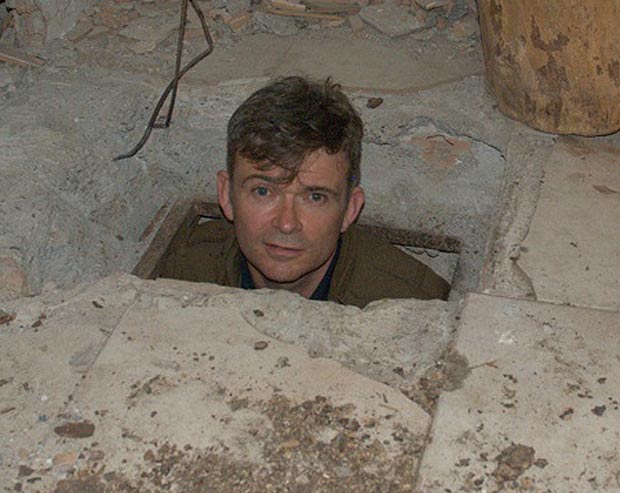
Will ‘The Mafia’s Secret Bunkers’ be released on DVD?
We have lots of extra footage, some of which you can see on the History Channel’s ‘Mafia Bunker’ website. Among the videos on the site is footage showing the former villa of Camorra boss [Francesco Schiavone] in [Casal di Principe, Caserta, Campania]. He is now serving a life sentence, and his house was confiscated by the state. It has been divided into two halves separated by a wall – straight down the middle, even dividing the grotesque blue marble spiral staircase he had built. The boss’s family still live in one half. The other half was handed over to an institute for autistic children, which is run by a policeman – a wonderful man who has autistic twins. It’s wonderful to see the fruits of murder being put to good use like that. But the house also serves as a metaphor of a place divided between a bloody past and hopes for the future. That footage did not make it into the final cut, as we needed to make a straightforward documentary with impact, but the fight against the mafia goes a long way beyond the hunt.
Will the documentary be shown in the United States?
I don’t know, but we are planning international versions that may be based on the Italian or British programmes, or a mix of both. I’m pretty sure it will be shown in the States before too long.
As a historian and writer about the mafias, what did you learn from doing the documentary, if anything?
I think it reinforced my sense of living through a time of great change in the fight against the mafias. In 1992, the sacrifice made by [murdered Italian anti-mafia magistrates] Giovanni Falcone and Paolo Borsellino, meant a moral line was drawn in the sand. [Their] fight against the mafias is still very much ongoing and its story is still being written in very dramatic times. [Mafia bosses] dig tunnels because they are being harassed: it’s a last resort. On one front, at least, the Italian state is bringing home some important successes.
 John Dickie is Professor of Italian Studies at University College London, England. He is the author of five books, including Delizia!: The Epic History of the Italians and Their Food; Cosa Nostra: A History of the Sicilian Mafia, which won the Crime Writer’s Association Award for Non-Fiction; Mafia Brotherhoods: Camorra, Mafia, ’Ndrangheta - The Rise of the Honoured Societies and ‘Mafia Republic: Italy’s Criminal Curse Cosa Nostra, ’Ndrangheta and Camorra from 1946 to the Present’. His website is https://www.johndickie.net and he tweets at @JohnDickie1.
John Dickie is Professor of Italian Studies at University College London, England. He is the author of five books, including Delizia!: The Epic History of the Italians and Their Food; Cosa Nostra: A History of the Sicilian Mafia, which won the Crime Writer’s Association Award for Non-Fiction; Mafia Brotherhoods: Camorra, Mafia, ’Ndrangheta - The Rise of the Honoured Societies and ‘Mafia Republic: Italy’s Criminal Curse Cosa Nostra, ’Ndrangheta and Camorra from 1946 to the Present’. His website is https://www.johndickie.net and he tweets at @JohnDickie1.
